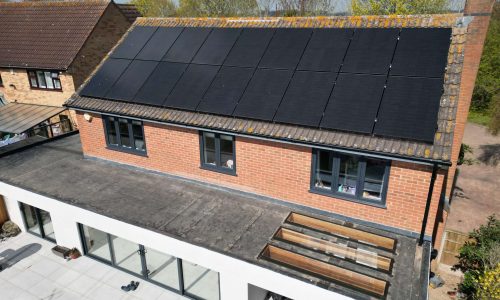In an era of rising energy costs and growing environmental consciousness, the sun offers a clear solution: solar energy for home . Moving beyond a niche trend, residential solar has become a mainstream, bankable investment that delivers long-term savings and energy independence. It’s more than just panels on a roof; it’s a comprehensive energy solution designed for the modern homeowner.
The Journey to Solar: From Feasibility to Flicking the Switch
The decision to go solar involves several key steps, each critical to maximising your return on investment and ensuring a smooth transition.
1. Feasibility and Yield Modelling: The Digital Survey
Before a single bracket is mounted, the process begins with a detailed feasibility study. This is where science meets your specific site. Experts use advanced software to conduct a digital survey, factoring in:
-
Solar Irradiance: The amount of sunlight your location receives.
-
Shading Analysis: Identifying obstructions (trees, chimneys, neighbouring buildings) that could reduce panel efficiency.
-
Roof Characteristics: Evaluating the size, pitch, and orientation of your roof. South-facing roofs (in the Northern Hemisphere) are typically optimal, but modern systems often perform excellently on east or west-facing surfaces too.
-
Energy Consumption: Analysing your household’s historical electricity use to determine the perfect system size—one that offsets your consumption without being needlessly large.
This initial modelling is crucial. It generates a yield projection, estimating the precise amount of electricity your system will produce and calculating your potential savings, payback period, and overall return on investment (ROI). It transforms a general idea into a solid financial case.
2. Design and Compliance: Securing the Green Light
Once the feasibility is confirmed, the engineering design phase begins. This includes selecting the bankable modules and inverters—components specified for maximum efficiency and longevity. The choice often comes down to high-efficiency monocrystalline panels and a reliable inverter, which converts the solar panels’ DC electricity into the AC electricity your home appliances use.
Crucially, this stage involves Grid Applications and DNO Approvals (Distribution Network Operator). For grid-tied systems, compliance is paramount. The installer handles all the paperwork, including permissions for exporting surplus energy back to the grid (often through a net metering or feed-in tariff scheme), ensuring your system operates legally and safely.
3. Installation and Handover: A Turnkey Solution
The physical installation is often quicker than homeowners expect, typically taking just a few days. Professional teams manage everything:
-
Bespoke Mounting: Installing the racking system on your roof (or ground-mount/carport) with structural checks to ensure roof integrity.
-
Panel and Wiring Installation: Mounting the panels and securing the electrical wiring in accordance with all local and national codes.
-
Inverter Connection: Installing the inverter, usually in a garage or utility room.
-
Testing and Activation: Connecting to the grid and activating the system.
The final step is the handover, where you receive all compliance documents and learn how to use your new system, including any monitoring tools.
Why Go Solar? The Unmatched Benefits
Switching to solar energy for your home offers a powerful combination of financial, environmental, and practical advantages:
| Benefit | Description |
| Financial Savings | Dramatically reduces or eliminates monthly electricity bills. Surplus energy can be sold back to the grid, generating credits or income. |
| Increased Home Value | Homes with owned solar panels are highly attractive to buyers and can see a significant increase in property value. |
| Energy Independence | Shields you from volatile utility price hikes and reduces reliance on the centralised power grid. Optional battery storage offers backup power during outages. |
| Low Maintenance | Solar panels have no moving parts and a lifespan of 25+ years. They typically require minimal maintenance, often just an occasional cleaning. |
| Environmental Impact | Reduces your household’s carbon footprint by generating clean, renewable energy with zero greenhouse gas emissions during operation. |
Future-Proofing with Integrated Solutions
To truly maximise the benefits of solar, modern residential systems increasingly incorporate integrated battery storage.
-
Increase Self-Consumption: Batteries store excess energy generated during the day. This stored power can then be used at night or during peak-rate periods, significantly increasing the percentage of solar energy you consume yourself.
-
Blackout Protection: For grid-tied systems, a battery can provide emergency backup power, keeping essential appliances running during a utility outage.
Furthermore, remote monitoring and smart energy management platforms allow you to track your production in real-time, helping you to optimise appliance usage and ensure your system is always performing at its peak.
Your Next Step: Calculate Your Potential
The question is no longer if solar is right for your home, but how much it can save you. While the initial investment is significant, generous incentives, declining technology costs, and immediate savings make the payback period increasingly short.
Ready to take control of your energy future? An expert consultation, starting with a no-obligation feasibility and yield model, is the first step toward a cleaner, more affordable home.
Would you like me to find some current solar incentive programs available in your area to help with the upfront cost?


